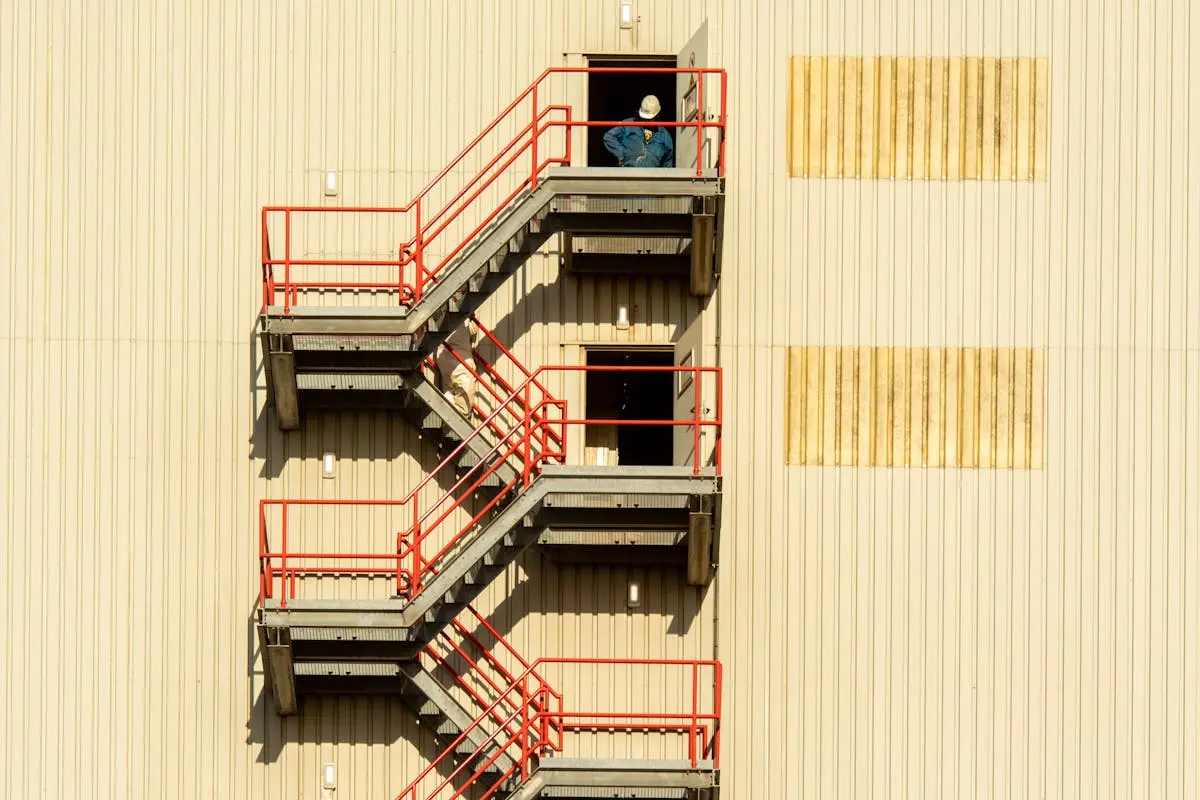Discovering that your external fire escape has failed inspection can be daunting, but addressing the issues promptly is essential to ensure safety and compliance with local regulations. This guide will walk you through the necessary steps if your fire escape doesn’t meet inspection standards.
Identify the Reasons for Inspection Failure
Review the inspection report thoroughly to understand why the external fire escape did not pass. Common issues include rust, structural damage, or loose connections. Inspectors might also highlight problems such as missing parts or inadequate maintenance practices. It’s critical to pinpoint the specific reasons, as this will guide the subsequent steps in rectifying the deficiencies.
Issues may sometimes stem from environmental exposure, such as severe weather conditions that have accelerated wear and tear. This is especially true for fire escapes made of metal, which can corrode over time if not adequately treated. Understanding these environmental factors is crucial in crafting a long-term maintenance plan.
Beyond physical damage, compliance issues could also cause a failure. Codes and regulations frequently update, informing you about new safety guidelines. A failure to meet these updated requirements might also be why your fire escape failed inspection.
Consult a Professional for Assessment
Engage a structural engineer or fire safety expert to assess the condition of the fire escape and provide guidance on necessary repairs or replacements. Professional assessments are invaluable, as they bring an expert eye to the intricacies of structural integrity and safety compliance. Their detailed evaluation can also provide peace of mind by clarifying whether the issues are minor or require comprehensive fixes.
Hiring an inspector can ensure the evaluation process is thorough and adheres to all local regulations and building standards. Their insights could prevent future failures by highlighting potential hazards that need attention before they become critical.
Remember to get multiple opinions if the initial assessment reveals extensive damage. A second opinion might provide alternative, more cost-effective, or practical solutions, ensuring you have various options for your fire escape repair and maintenance strategy.
Plan and Execute Necessary Repairs
Based on the assessment, plan and carry out the required repairs with the help of licensed professionals. Ensure that all repairs conform to local building codes and safety regulations. Prioritize addressing the most critical issues, such as structural weaknesses or rust, which could compromise the escape’s usability in an emergency.
It’s advisable to consider implementing additional safety features during repairs, such as anti-slip treads or improved handrails. Enhancements like these can augment the safety and functionality of your fire escape, providing extra reassurance during emergencies.
Schedule a Follow-Up Inspection
Once the repairs are complete, contact your local fire department or relevant authority to schedule a re-inspection to verify that the fire escape meets safety standards. Passing this inspection is crucial to ensure the building’s compliance and the safety of its occupants.
Consider scheduling the re-inspection promptly to minimize any period during which the fire escape might be out of compliance, which could expose the property to legal liability or increased insurance premiums. Keeping a documented record of all maintenance and inspections is also a good practice for legal and safety audits.
Implement Regular Maintenance Checks
Establish a routine maintenance plan to prevent future issues, ensuring the fire escape remains in good condition and compliant with safety laws. Regular checks should include visual inspections for rust, loose bolts, and other signs of wear and tear.
Property owners should proactively schedule periodic professional inspections to spot potential problems early. This proactive approach can help reduce repair costs over time and maintain the integrity and functionality of the escape route.
To assist with ongoing maintenance, consider training tenants or building personnel on what signs to look for that might indicate issues with the fire escape. Prompt reporting of these signs can help address minor problems before they escalate.
Ensuring Safety and Compliance with Your Fire Escape
Ensuring your external fire escape passes inspection is crucial for safety and compliance. By promptly addressing structural concerns, hiring qualified professionals for repairs, and scheduling a re-inspection, you can effectively manage the situation and enhance the safety of your building.



